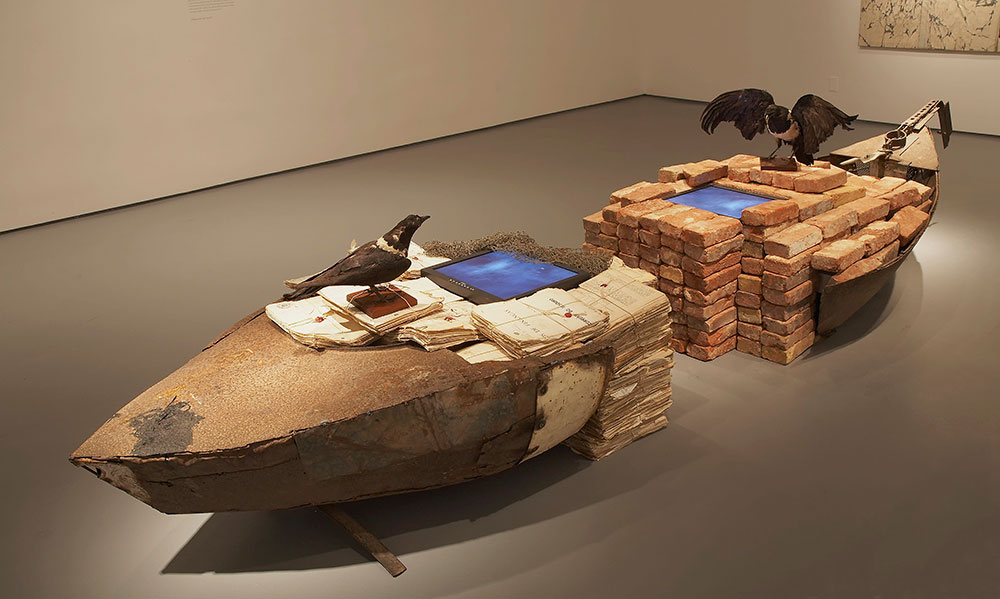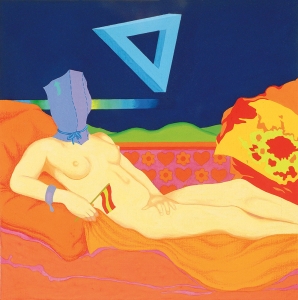

António Ole. Luanda, Los Angeles, Lisboa
This retrospective exhibition of the work of António Ole (Luanda, 1951) maps out a geography of experiences, offering a glimpse of and creating bridges between the cities that have played a defining part in the artist’s career.
Having studied Cinema at the American Film Institute in Los Angeles (1975) and Afro-American Culture at the University of California (1981–85), the artist held his first international exhibition at the Museum of African Art in Los Angeles, with a provoking reflection on slavery and colonialism.
A guiding figure for a whole generation of contemporary Angolan artists, Ole made his mark on the international scene with work ranging from sculpture to installations, from painting and collage to drawing, and from photography to film, in an ongoing dialogue with cities, and most especially with the city of Luanda, its architecture and its inhabitants. The assemblage and joining together of a range of different materials, the themes of the island and the sea, and a strong awareness of social issues have all played a key role in his artistic output, from 1967 onwards.
About the event

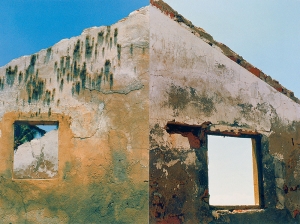
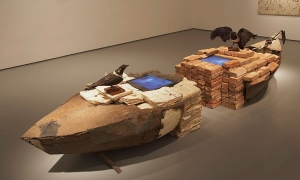
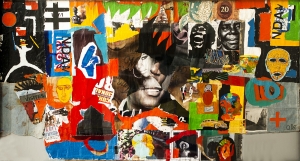
In conversation with António Ole
(Extratcts from the interview published in the exhibition catalogue)
By: Isabel Carlos
Isabel Carlos (IC): Perhaps we should begin with the title of the exhibition. It’s three cities, which in a sense represent your geography.
António Ole (AO): Yes, exactly. This triangle: Luanda, Los Angeles, Lisbon.
IC: The feeling I have – and you can tell me if I’m right or not – is that until you went to Los Angeles, what you were looking at and what you were in dialogue with was above all European art, Pop Art, Surrealism… In Los Angeles, it seems to me, looking chronologically at your works, you suddenly find your Africanness.
AO: It’s true. That’s right!
IC: Why Los Angeles?
AO: I started very young, for family reasons but also because of my drawing teacher at secondary school, Eduardo Zinc, who was passionate about Cubism. When I was 16 I was very influenced by Picasso and I tried to imitate the Cubists. When 25 April 1974 came [the end of the dictatorship in Portugal], I had the feeling that I should try to take a break from painting and what I had being doing up till then. Although I had produced numerous covers and illustrations for books by Angolan authors.


